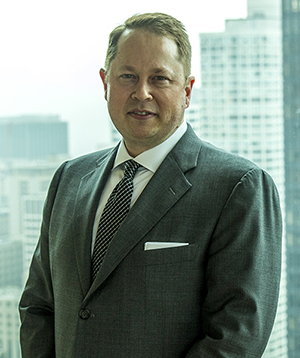 Pete Scarpelli came to Purdue’s Krannert School planning to land a job in the world’s growing financial markets, but after taking a course taught by Professor Charlene Sullivan, he found himself on a career path that spans even more of the globe – the business of energy.
Pete Scarpelli came to Purdue’s Krannert School planning to land a job in the world’s growing financial markets, but after taking a course taught by Professor Charlene Sullivan, he found himself on a career path that spans even more of the globe – the business of energy.
“Once I started in the energy business, I had the chance to participate in the deregulation of the electric supply in California in the late 1990s,” says Scarpelli. “As a direct result of what I learned in that course, I was able to arbitrage energy costs for our clients’ buildings based on their usage and the current market price.”
That success led Scarpelli to cofound his own company, RETX, and invent a product designed to match wholesale power market prices to energy consumers. The company was acquired in 2008 by Schneider Electric, where he helped develop smart grid and demand response opportunities in the U.S. and global markets.
Based in Chicago, Scarpelli joined CBRE in 2010 and is focused on managing $10 billion worth of energy spending annually for Fortune 500 and investor owned multi-tenant buildings. “The key is having a strategic approach and data-driven operations that allow us to allocate our clients’ capital where it has the greatest value,” he says.
In 2015, Scarpelli led CBRE’s acquisition of a global building system integrator and “smart building” network operating center. “We can now extract data from building management systems and use analytics to find more effective and efficient ways for operating the facilities,” he says. “It’s reducing the energy costs of our buildings by 10 to 20 percent and saving our customers millions.”
Scarpelli says business analytics and information management also is advancing existing technologies.
“Occupancy sensing has been around for a long time – you walk into a room and all the lights go on, for example,” he says. “But today the sensing capabilities are actually embedded inside light bulbs, so the data we extract and analyze is more valuable.
“We can learn not only how to manage the building better from an energy perspective, but also how to manage it better from an occupancy and space utilization perspective. In my world, that information is as good as gold.”

